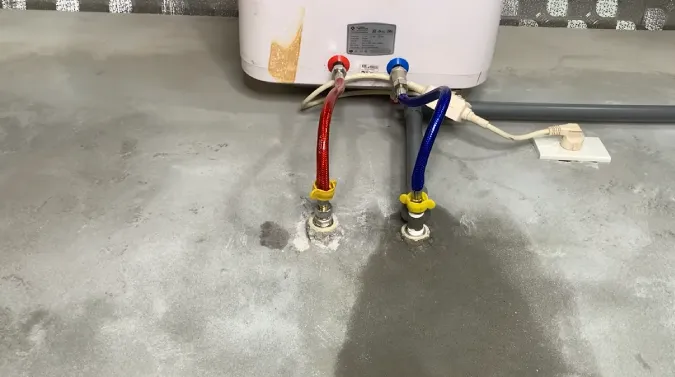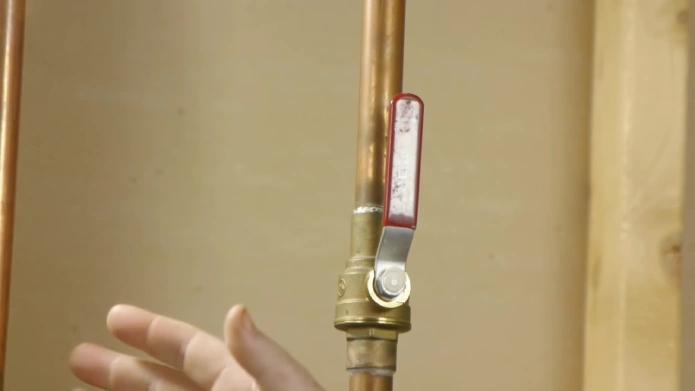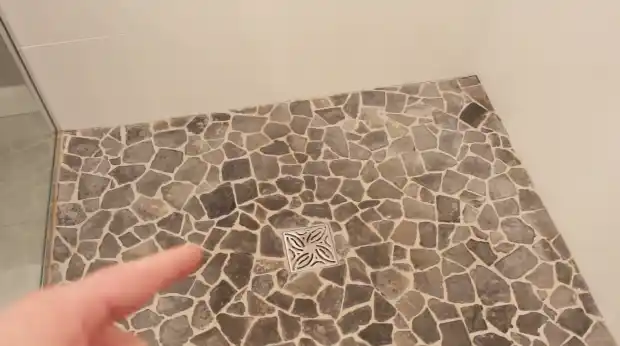Last Updated on May 16, 2023
Homeowners who are looking for budget-friendly alternatives often consider PVC piping, yet when it comes to water heater relief valves, the right material choice is essential.
PVC may be cost-effective and straightforward to install, but it lacks the robustness of other materials such as copper, stainless steel, or brass. It is not recommended for applications that involve high temperatures or pressure hot water systems.
Learn why PVC is unsuitable for a water heater relief valve and how viable alternatives offer greater temperature and pressure tolerance.
Can You Use PVC For Water Heater Relief Valve: Reasons & Explanation

PVC is Not Designed to Handle High Temperatures
PVC is not intended to endure high temperatures when used as a relief valve for water heaters due to its weaknesses when subjected to extreme heat. PVC, or polyvinyl chloride, is a plastic commonly used in plumbing and home improvement projects.
While PVC is strong and durable, it has its limits when exposed to high temperatures. If the water heater relief valve is set too high or begins to malfunction, the higher temperature can cause irreparable damage to the PVC piping and valves.
Excessive heat can weaken the molecular bonds that hold together the molecules within PVC, causing them to expand and break apart. This expansion can cause warping or cracking within pieces of PVC exposed to heat. Increased temperatures can also be damaging because they reduce the elasticity of PVC.
It becomes more brittle and more prone to breaking under pressure or stress. When using a water heater relief valve with PVC piping, appropriate temperature settings must be used and maintained to prevent damaging the pipes over time.
The ideal setting for a relief valve should be between 125-135 degrees Fahrenheit (52-57 degrees Celsius), depending on the manufacturer’s guidelines for your specific model.
It may also be advisable for homeowners with older water heaters equipped with PVC piping systems to install an additional thermostatic control device near their tankless heater to maintain appropriate temperature levels at all times.
Water heater relief valves should be used with PVC piping systems in accordance with the manufacturer’s guidelines. Homeowners should also inspect their water heater relief system for signs of wear or damage caused by high temperatures, such as warping and cracking in the pipes.
By taking these steps and addressing problems quickly if they arise, homeowners can help extend the life of their plumbing system while avoiding any potential risks associated with improper use of high-temperature settings within their water heater’s relief valve.
PVC is Not Suitable for Hot Water Applications

PVC is not appropriate for hot water piping in a water heater relief valve because PVC releases toxic chemicals when exposed to heat. This is because PVC contains additives, such as phthalates, which are known to break down at high temperatures and leach into the water.
When this happens, these chemicals can enter the water supply and be consumed by humans or animals. Additionally, when heated, PVC emits VOCs (Volatile Organic Compounds) into the air, which can have adverse health effects on humans and animals.
In addition to releasing toxic chemicals, PVC becomes increasingly brittle at higher temperatures. This can lead to a weakening of the pipe structure over time and eventual cracks or leaks in pipes carrying hot water from the relief valve. The resulting leakage could cause extensive damage and pollution in nearby areas.
Due to its low strength properties, PVC cannot withstand high-pressure water heater relief valves, causing it to burst or crack and leading to further damage. The release of pressurized hot water could cause serious scalding injuries and PVC damage if not properly managed.
For these reasons, materials such as stainless steel are preferred for use in hot water applications, especially those involving a Water Heater Relief Valve. Stainless steel can withstand higher pressures without failure while being corrosion-resistant and more durable than PVC, even at higher temperatures.
Stainless steel does not release toxic chemicals into the atmosphere or water supply, unlike PVC, when exposed to heat, making it a much safer option for hot water applications in relief valves.
PVC is Not Durable Enough for High-Pressure Usage

PVC is not sturdy enough for high-pressure water flow inside a water heater relief valve for various reasons. PVC pipes, commonly used in plumbing and other home improvement projects, can crack or rupture under the pressure of water flowing through them at high rates.
When this occurs, it can lead to serious damage both inside and around the water heater and potential flooding of the surrounding area. High-pressure water flow is often underestimated in plumbing, but it should never be taken lightly.
Pressure increases exponentially with increasing velocity, meaning that a small increase in pressure can lead to drastic results over time. This is why it is important to use materials that are rated for higher pressure than what your system requires.
For instance, PVC pipes have an operating temperature range between 32°F and 140°F and can become brittle over time due to their exposure to extreme temperatures like those found in hot water heaters.
They are also generally not durable enough to handle high-pressure water flows associated with these types of appliances. Some PVC pipe materials contain chlorine that corrodes easily under certain conditions.
This corrosion can quickly break down the structural integrity of the pipe and could cause dangerous leaks or even catastrophic failure.
When installing any type of piping system near a hot water heater, especially one that will be exposed to significant amounts of high-pressure water flow from the Relief Valve, it is important to understand what type of material will provide the most incredible amount of protection and reliability for your system’s longevity.
The most reliable material for these applications is typically copper or steel due to their greater resistance to heat and corrosion as well as their ability to withstand higher pressures without cracking or rupturing as PVC pipes do.
Copper or steel pipes are also relatively easy to work with while providing long-term durability if properly installed by a qualified professional plumber.
So, it is important to choose a material that has been specifically designed for piping near or around a hot water heater relief valve, as well as to hire an experienced professional with experience working with these materials to ensure the safety and security of your system in the future.
Water Heater Relief Valve: The Recommended Alternatives to PVC

Alternative 01: Copper
Copper is an ideal alternative for relief valves on water heaters due to its durability, temperature resistance, and affordability. It is highly resistant to corrosion and will not degrade over time, making it a great choice for long-term use.
Additionally, copper has a high melting point of 1,984°F (1,083°C), meaning it will not fail under extreme temperatures like those produced in a hot water heater. When looking at the cost of materials, copper is relatively inexpensive when compared with other metals like stainless steel or brass.
Copper is one of the most commonly used materials in plumbing because of its low cost and reliable performance. Finally, copper is also considered one of the safest materials for contact with drinking water because it does not contain any hazardous chemicals or toxins.
For these reasons, copper is an excellent choice for relief valves in water heaters and should be considered a viable alternative to PVC piping.
Alternative 02: Stainless Steel
As an alternative to PVC, stainless steel makes an excellent water heater relief valve. This metal has excellent corrosion resistance and can withstand high temperatures, making it an ideal material for plumbing applications.
Unlike PVC, stainless steel will not degrade over time due to the effects of hot water or other aggressive materials found in plumbing systems. Stainless steel does not react with water or other chemicals, making it highly durable and long-lasting.
Additionally, stainless steel is non-porous and non-toxic, which means it does not leach harmful chemicals into the water system as some other materials may do. The material is also easy to clean and maintain, as it does not require complex cleaning methods like other metals.
Stainless steel also provides an attractive aesthetic when used in plumbing applications. Overall, stainless steel provides superior performance compared to PVC and is a great alternative in applications involving hot water or steam pressure relief valves.
Alternative 03: Brass
One of the most common and recommended replacements for PVC in water heater relief valves is brass. This is because brass has superior corrosion resistance and durability, making it ideal for use in plumbing applications like water heaters.
Brass also has a higher melting point than PVC, so it can withstand higher temperatures without degrading or melting. Additionally, brass has excellent wear resistance, meaning it will not corrode or rust over time like plastic materials can, making it an ideal choice for long-term installation in home plumbing systems.
Another advantage of brass over plastic valves is their ability to resist extreme temperatures without deforming or leaking. Plastic valves may start to crack or become brittle at high temperatures, while brass remains stable regardless of its temperature exposure.
This makes brass particularly suitable for use in areas with high-temperature fluctuations, such as basements or attics.
One of the most attractive features of using brass materials is that it is more affordable than alternatives such as stainless steel and copper. Although these metals are more expensive than brass, they may not be necessary depending on the application and budget constraints of the homeowner.
Brass is also very easy to work with, so installation typically takes much less time than other options. When compared to other materials, such as plastic or PVC, brass provides superior temperature and corrosion resistance.
Not only does it provide excellent durability for longevity and reliability, but it also offers cost savings due to its affordability and ease of installation compared to more expensive metals like stainless steel or copper.
Does Pex Affect Water Pressure Inside the Water Heater Relief Valve?
PEX plumbing systems can affect the water pressure circulating through a water heater relief valve. The lower pressure rating of PEX (160psi) compared to FlowGuard Gold systems (200-400 psi) means that more of the system pressure will be transferred to the water heater relief valve in a PEX system.
This could lead to stress on the relief valve and cause it to fail prematurely if it is not designed to handle such pressures. PEX piping tends to be less structurally sound than copper or CPVC, putting additional strain on the relief valve over time due to the weight of other components on top of it.
Furthermore, since PEX piping is inherently more flexible than copper or CPVC, its ability to absorb shock loads has been reported to be reduced compared with other materials, which could also lead to increased pressure build-up within the relief valve.
Ultimately, whether or not a particular PEX system will have an impact on the water pressure inside of a water heater relief valve depends largely upon its design and installation.
Contractors need to assess all aspects of a job before committing and make sure that any potential issues with PEX are taken into consideration during planning.

Can You Use a PEX Pipe on the Hot Water Relief Valve?
The hot water relief valve can be fitted with a PEX pipe. PEX is a type of cross-linked polyethylene (XLPE) that has many advantages over other traditional piping materials. It is very strong and flexible, making it ideal for plumbing applications.
Additionally, it has excellent chemical resistance, meaning that it will not corrode or degrade when exposed to various substances found in water systems. It also does not require soldering or gluing, making installation quick and easy.
Most importantly for this application, PEX systems are tested to and can be used with standard T and P relief valves that operate at 210 degrees Fahrenheit and 150 psi. This makes them ideal for hot water applications where temperatures may exceed 180 degrees Fahrenheit.
In addition to being compatible with these valves, installing a PEX pipe gives you peace of mind knowing that your plumbing system is protected from high temperatures and pressures.
The flexibility of the PEX allows for easier installation and reduces potential stress points in the pipe system due to temperature changes or pressure fluctuations. As long as the temperature does not exceed 200°F, a PEX pipe is an excellent choice for use on hot water relief valves.
Ensure Home Safety by Avoiding PVC for Water Heater Relief Valves
There are many reasons why someone might think that using PVC plastic for a relief valve on a water heater is acceptable. However, in reality, this material cannot handle high temperatures or pressure, which can lead to dangerous situations or damage to your home’s plumbing system.
When selecting a material for your water heater relief valve, make sure that you opt for one of the recommended alternatives, such as stainless steel, copper, or brass which are better suited and more resilient against degradation over time.
Doing so will ensure that your home remains protected from any potential hazards caused by incorrect installations or damaged valves.



